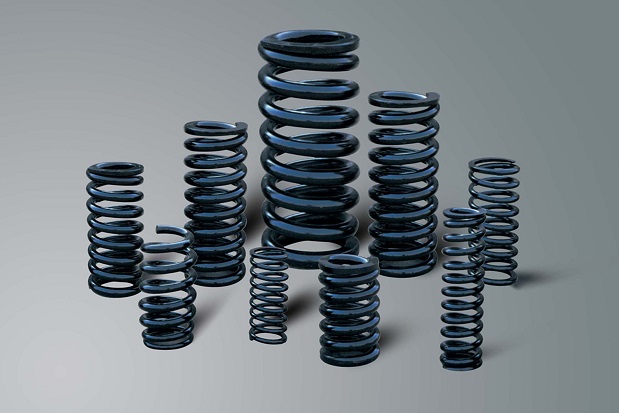The modification of Automobile Spring
The coil spring is the most commonly used spring in the suspension system because it is easy to manufacture, high performance and efficiency and low price. The physical definition of spring is to store energy. When we apply a fixed force to the spring, it will deform. When we remove the force, the spring will tend to return to its original state. However, when the spring rebounds, the amplitude of shock will often exceed its original length. The free shock caused by spring rebound will not be slowed down until there is friction resistance, This slows down the work of the spring free vibration soup, which is usually the task of the shock absorber.

The general spring is the so-called “linear spring”, that is, when the spring is stressed, its compression deformation follows Hooke’s law in Physics: F = KX, where f is the force application, K is the elastic coefficient, and X is the deformation. For example, a linear spring with a force of 40kg will cause a compression of 1cm, and then the compression will increase every 1cm with an additional force of 40kg. In fact, there are other pressures on the suspended spring. Even when the spring is fully extended, the spring will still be under pressure to fix the spring itself on the car.
In the traditional spring and shock absorber suspension design, the spring plays the role of supporting the vehicle body and absorbing the impact caused by uneven road surface and other forces on the tire. The so-called other forces here include the forces caused by acceleration, deceleration, braking, turning, etc. More importantly, in the process of eliminating vibration, it is necessary to maintain the continuous contact between the tire and the road and maintain the tracking of the car. Improving the contact between the tire and the road is our primary consideration to improve the handling.
The main function of the spring is to maintain the comfort of the car and keep the tire in full contact with the ground. Using the wrong spring will have a negative impact on the driving quality and handling. Imagine that if the spring is completely rigid, the suspension system will not work. When encountering uneven roads, the car jumps up and the tires will completely leave the ground. If this happens when accelerating, braking or turning, the car will lose its tracking. If the spring is very soft, it is easy to “sit on the bottom”, that is, the suspension stroke is exhausted. If the bottom sitting occurs during bending, it can be regarded as that the elastic coefficient of the spring becomes infinite (there is no compressed space), and the body will produce immediate weight transfer, resulting in the loss of tracking. If the car has a long shock absorption stroke, it may avoid “sitting at the bottom”, but the relative body will also become very high, and a high body means a high body center of gravity. The height of the body center of gravity has a decisive impact on the handling performance, so too soft shock absorber will lead to obstacles in handling. If the road is absolutely flat, we don’t need springs and suspension systems. If the road surface is rugged, a relatively soft spring is required to ensure the contact between the tire and the road surface, and the travel of the spring must be increased. The hardness of the spring is determined by the ruggedness of the road surface. The more rugged the spring is, the softer the spring is. However, how soft it is is is a key problem. Usually, this requires the accumulation of experience, and it is also an important topic for all vehicle manufacturers and teams.
Generally speaking, soft springs can provide better comfort and maintain better tracking on rough roads. However, when passing through the general road, it will cause the suspension system to swing up and down, affecting the control. In the vehicle equipped with good aerodynamic components, the soft spring will cause the change of vehicle height when the speed increases, resulting in different handling characteristics at low speed and high speed.






